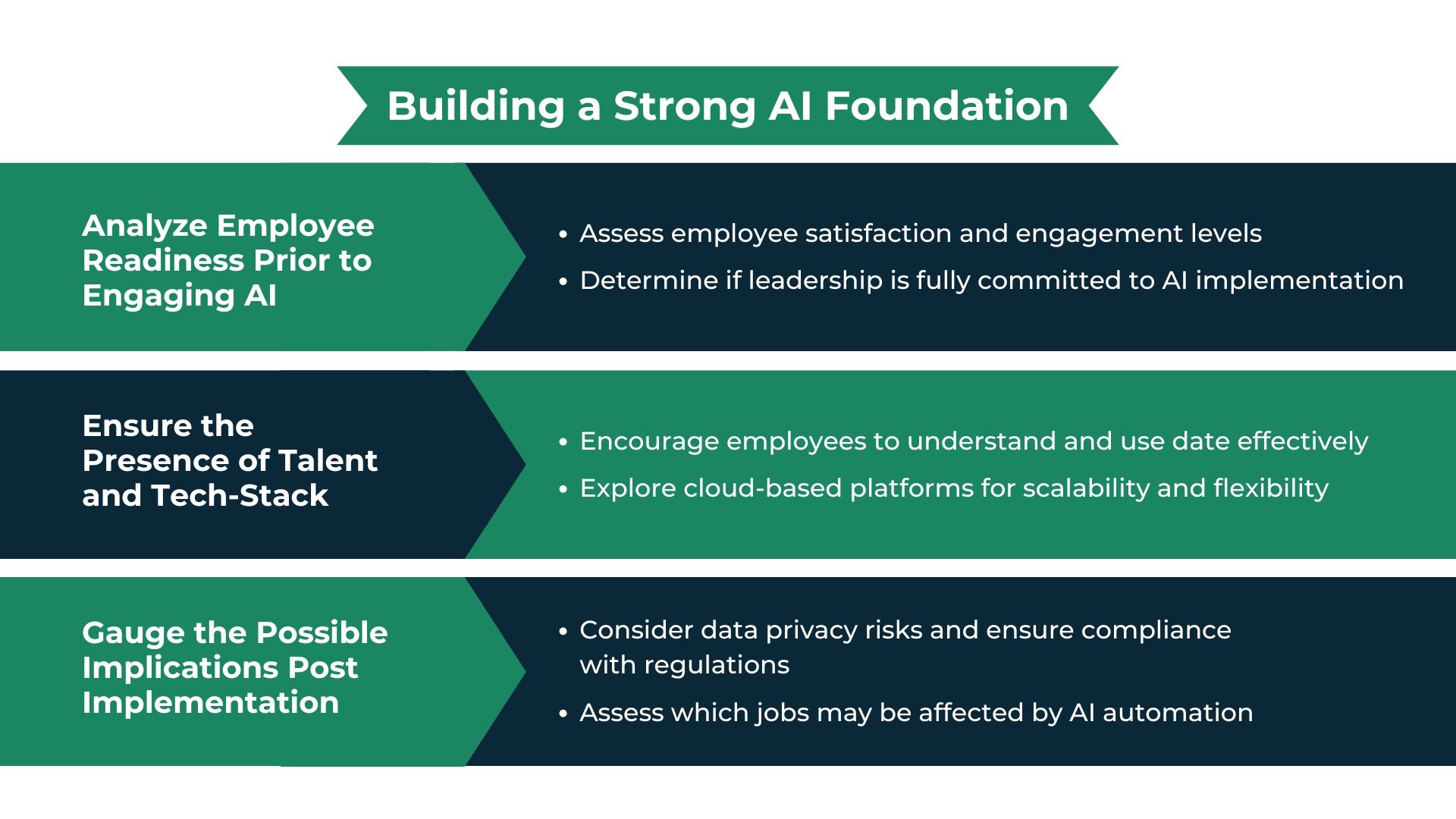Advanced AI Leadership Training to Prepare Executives for the Future

| Synopsis: Strategic leadership is essential for the successful implementation of AI in business. The MIT xPRO AI leadership training for executives equips leaders with the knowledge and skills needed to harness the power of artificial intelligence and transform their businesses. By developing a strong AI acumen, executives as well as business leaders can position their organizations for long-term success in the AI era. |
Artificial intelligence (AI) is one of those technological breakthroughs that has changed how businesses are thought of, conducted, and improved. Professionals and executives from any industry vouch for the resounding impact of AI in business.
While IT departments are proficient in managing the technical intricacies of AI-powered systems, the strategic deployment of AI necessitates a leadership perspective that encompasses both human and business factors. Leadership in the AI era demands a deep understanding of this innovation and its integration into the organization’s strategic planning and decision-making processes.
With the spotlight shifting to executives, it is crucial that they sharpen their AI domain knowledge to complement their business-oriented acumen in AI. An article by IBM stated that 35 percent of enterprises invest in training programs to upskill their workforce on AI and machine learning tools.1 An AI strategy and leadership program will become central to this shift in capability building.
The MIT xPRO artificial intelligence course for executives aids leaders in turning this transformative technology into a business growth machine.
MIT xPRO’s AI Leadership Program: Bridging Strategy and Technology
The MIT xPRO AI leadership course is purpose-built to help senior leaders convert emerging AI technologies into scalable business outcomes. It is among the best AI leadership courses globally—offering a blend of academic rigor, real-world insights, and c-suite executive perspective.
Top Four Expectations from Leaders while Implementing AI in Business
The future of AI in business hinges on the crucial balance between humans and machines. This equilibrium is not just about harmonizing cognitive and artificial intelligence. The human element also represents the management skills that leaders need to master to align everyone (teams, stakeholders, and investors) with their tech road maps. Executives are expected to blend their technological expertise with strategic thinking to maximize the value of AI.
Managing Teams with Diverse Skills
Executives or emerging leaders often find it difficult to even lead smaller teams when their domain expertise does not match the skills of the members they have to guide. A multidisciplinary team may have conflicting perspectives in identifying and agreeing on the optimal way to implement AI. Leaders are expected to bring everybody in the team with diverse skills and perspectives on board with their plan to implement AI in business processes. A well-designed AI leadership training program like MIT xPRO’s enables executives to bring alignment across functions, fostering trust and collaboration through strategic leadership and shared vision.
Convincing and Upskilling the Organization
Recognizing the importance of AI, 95 percent of business leaders are taking proactive steps to develop their organizations’ AI capabilities. This includes personal upskilling for 44 percent of executives, according to a World Economic Forum report. Organization-wide AI implementation is possible only when the organization’s people are hands-on with the technology.2
But this is where the problem lies across most enterprises. On the one hand, existing employees are apprehensive about machines replacing humans and the effort required for upskilling. On the other hand, hiring new talent entails convincing the top brass and aligning them with the organization’s vision and mission.
Leaders like you must take ownership in inspiring and upskilling teams, a challenge that the MIT AI leadership course directly addresses through frameworks on stakeholder engagement and change communication.

Leaders must conduct a sentiment analysis of their organizations’ workforce and strategize their communication tone based on the insights gained from the analysis. The manner and the semantics should steer clear from “should” and dwell more on “could” to convince employees to upskill themselves. Leaders must clearly communicate about the personal growth prospects for the manpower to make AI reskilling inspiring while putting the organization leagues ahead in the race to AI adoption.
Investment Trade-Offs
The possibilities of AI in business are extensive. Yet, it may not be good enough to convince the board of directors to give a nod to strategic AI investments. The thought of reallocating expenditure from legacy tools with a proven value to something new but risky may dissuade investors unless there are validated metrics. Leaders trained in AI strategy and leadership programs are better equipped to build persuasive business cases, forecast ROI, and manage concerns around integration time, data security, and system longevity.
Guarding Against AI Liability Risks
Most inhibitions against an AI strategy stem from the fact that it may yield biased or incorrect information if not scrutinised by a human expert. The lack of managerial supervision leads to technology risks trumping otherwise exceptional innovations.
The best artificial intelligence programs emphasize ethical leadership and proactive oversight—critical competencies that MIT xPRO builds in its curriculum.
Laying the Foundation for Optimal Use of AI in Business
A sound knowledge of AI and ML is valued in technical experts. However, to grow into a leader, they must learn how to enable and empower the successful use of AI in business setups.
As we step into a new era of technological advancement, marked by uncertainties and volatilities, it becomes even more crucial for leaders to lay a solid foundation for the effective use of AI in their organizations.

Explore the MIT xPRO AI for Senior Executives Program
The MIT xPRO AI for Senior Executives Program equips leaders with a strategic framework for identifying and implementing optimal AI solutions tailored to their organizations’ objectives.
The on-campus and online MIT xPRO program focusing on artificial intelligence in business covers machine and deep learning, AI-based product design, executive leadership, and AI’s transformative impact on the workplace. It combines on-campus immersions in Cambridge, Massachusetts, with online and live online sessions.
MIT xPRO AI for Senior Executives
|
Focus Area |
MIT xPRO AI for Senior Executives Program Insights |
|
AI for strategic impact |
|
|
Designing and building AI products and services |
|
|
Executive leadership |
|
|
Data strategy and the future of AI |
|
Key Features of the MIT xPRO AI for Senior Executives Program
Some of the key aspects characterizing the MIT xPRO AI for Senior Executives Program include:
- Ten days of in-person sessions that include team-building activities, masterclasses with practitioners, a campus tour, and networking events during the in-person modules
- Faculty members from MIT and research pioneers from CSAIL (computer science and artificial intelligence laboratory) who are at the epicenter of AI R&D and innovation
- The opportunity to establish meaningful connections with influential industry peers across the globe and the MIT xPRO faculty
- A verified certificate upon completion of the program
- An action learning project to synthesize program learnings for your organization’s unique challenges

AI should not be perceived as an IT strategy but as a transformative force capable of reshaping the way operations and businesses are conducted. To maximize its potential, leaders must shift their perspective from viewing AI as a one-time goal to embracing it as a core business strategy. The MIT xPRO AI for Senior Executives Program focusing on AI in business is a pivotal step toward treating AI as an enterprise-wide strategy rather than a mere IT initiative. By providing a comprehensive understanding of AI’s potential, the program equips leaders like you with the foresight and tools needed to navigate the complexities of AI implementation.
Reference links:
1. IBM



